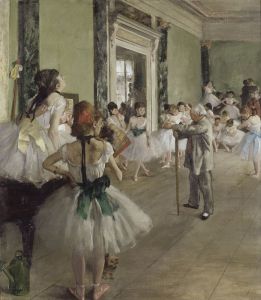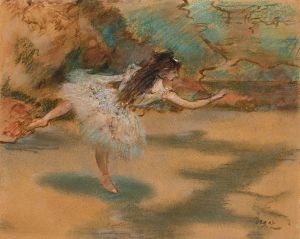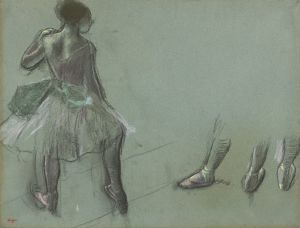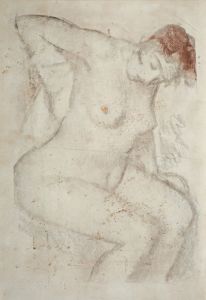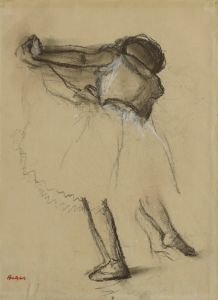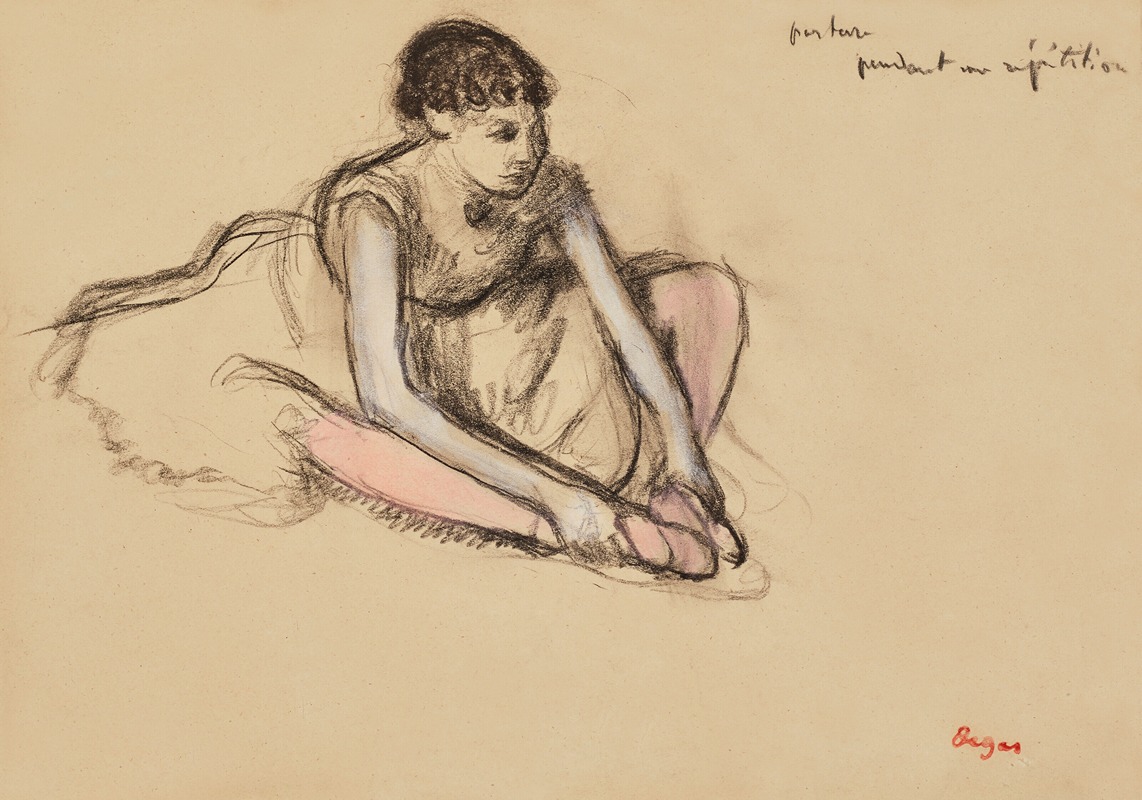
Danseuse assise
A hand-painted replica of Edgar Degas’s masterpiece Danseuse assise, meticulously crafted by professional artists to capture the true essence of the original. Each piece is created with museum-quality canvas and rare mineral pigments, carefully painted by experienced artists with delicate brushstrokes and rich, layered colors to perfectly recreate the texture of the original artwork. Unlike machine-printed reproductions, this hand-painted version brings the painting to life, infused with the artist’s emotions and skill in every stroke. Whether for personal collection or home decoration, it instantly elevates the artistic atmosphere of any space.
Edgar Degas's Danseuse assise (Seated Dancer) is a pastel artwork that exemplifies the artist's enduring fascination with ballet and the world of dancers. Created in the late 19th century, this piece reflects Degas's mastery of capturing movement, posture, and the intimate, behind-the-scenes moments of performers. Degas is renowned for his innovative approach to depicting dancers, and Danseuse assise is a notable example of his ability to portray the human figure with both precision and sensitivity.
The artwork depicts a ballerina seated in a moment of rest, her posture relaxed yet poised. Degas often chose to portray dancers in informal, candid poses rather than idealized or staged performances. This approach allowed him to explore the physicality and discipline of ballet, as well as the quieter, more introspective moments of the dancers' lives. In Danseuse assise, the dancer's body is rendered with a keen attention to anatomy and movement, while the pastel medium lends a softness and immediacy to the composition.
Degas frequently used pastels in his later works, and Danseuse assise demonstrates his skill in layering colors and textures to create depth and vibrancy. The pastel strokes convey the delicate fabric of the dancer's costume and the subtle play of light on her skin. The background is often simplified or abstracted in Degas's works, drawing attention to the figure and emphasizing the intimacy of the scene.
The subject of ballet was central to Degas's oeuvre, and he produced numerous works featuring dancers in various settings, from rehearsals and performances to moments of rest and preparation. These works not only highlight his technical prowess but also provide a glimpse into the world of 19th-century ballet, which was both celebrated and scrutinized in Parisian society. Degas's interest in dancers was not merely aesthetic; it also reflected his broader engagement with modern life and the human condition.
Danseuse assise is housed in a private collection, and like many of Degas's works, it continues to be studied and admired for its artistic and historical significance. Degas's innovative compositions, use of color, and focus on everyday moments have solidified his reputation as one of the most important artists of the Impressionist movement, even though he often distanced himself from the label. This artwork, like much of his work, captures the beauty and complexity of a fleeting moment, rendered with extraordinary skill and sensitivity.











